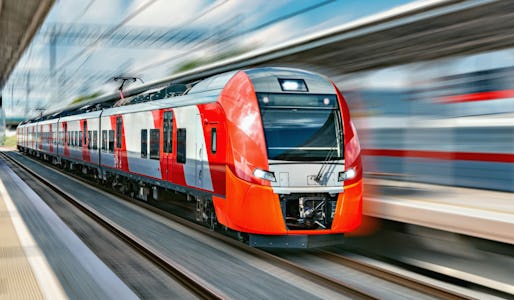Electric Trains:リチウムイオンバッテリーへの移行

Rail networks today already largely consist of electric trains running on overhead cables or live rails. However, this is not feasible everywhere due to the high infrastructure cost/mile, remote geographic locations, and the practicality of building through tunnels and bridges. For these stretches of track, rail OEMs and operators currently rely on diesel fuel. Use of diesel cannot last forever in any market, and the new IDTechEx report "Battery Electric & Hydrogen Fuel Cell Trains 2023-2043" finds the transition towards zero emission rail solutions is well underway with battery-electric technologies at the forefront.
Indeed, industry momentum has been building through the rapid advancement of Li-ion battery technology, with systems now capable of reaching the multi mega-watt hour (MWh) level in confined carriage spaces. Systems up to ~14.5MWh are being installed today in the largest trains, known as battery electric (BEV) locomotives, or BELs. In the future, the vast energy requirements of rail will eventually lead to some of the largest traction battery deployments across all electric vehicle markets - potentially beyond 20MWh per train. Even then, the most demanding applications will create opportunities for green hydrogen fuel cells.
In this webinar IDTechEx explores the markets and technologies for electric trains, including:
- Battery electrification entry points in train markets: mainline/shunter locomotives and multiple units
- Market drivers and barriers for electric trains
- Battery chemistry options and their suitability for the rail market, comparing NMC, LFP, LTO, solid-state and lithium metal
- Competitive landscape analysis with details from IDTechEx primary research interviews with multiple heavy-duty system suppliers
- Insight into the IDTechEx global market outlook for electric trains
IDTechEx Research
This webinar is based on content taken from the new IDTechEx report "Battery Electric & Hydrogen Fuel Cell Trains 2023-2043", which assesses the global opportunities emerging as energy storage technologies advance rapidly. Granular 20-year forecasts include train deliveries, battery demand (GWh), fuel cell demand (MW) and market value (US$ billion) across locomotive (BEL), multiple unit, and shunter trains. The cost evolution of railroad batteries, FCs and green hydrogen is also explored to assess long-term feasibility.
This research forms part of the broader electric vehicle and energy storage portfolio from IDTechEx, who track electric vehicle markets and technologies across land, sea and air, helping you navigate whatever may be ahead. Find out more at www.IDTechEx.com/Research/EV.
Presenter

Luke Gear
Principal Technology Analyst
IDTechEx
Report
Related research
Reports
- Battery Markets in Construction, Agriculture & Mining Machines 2024-2034
- Fire Protection Materials for EV Batteries 2024-2034: Markets, Trends, and Forecasts
- Future Automotive Technologies 2024-2034: Applications, Megatrends, Forecasts
- Sodium-ion Batteries 2024-2034: Technology, Players, Markets, and Forecasts